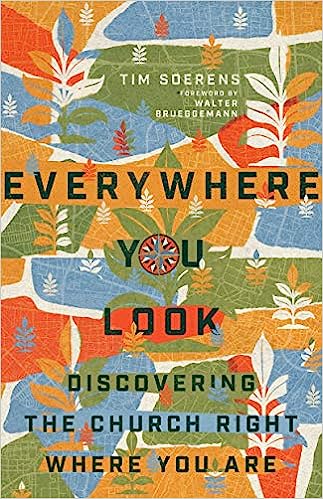I am excited about beginning our new book, Everywhere You Look: Discovering the Church Right Where You Are. For this Tuesday, please read Chapter 1 “The Movement or the Meltdown” and Chapter 2 “The Big Why.” If you need a book, please let me know.
Where We’re At:
Tim Sorens begins his book with a recognition of the de-churching in the United States. In the ten years from 2009-19, the religiously unaffiliated grew from 16% to 26% of the American population while adults identifying as Christian fell from 78% to 65%. In the sixty years from 1940 to 2000, the percentage of Americans saying they belonged to a church, synagogue, or mosque dropped from 73% to 70%. In the twenty years since, that number has plunged to only 47%.
When I was growing up, almost everyone in Conway belonged to a church, even if they only attended sporadically. We did not have rec league practices or games on Wednesday nights because all the Baptist churches had services and youth group that night. The question was never “If you go to church” but “Where do you go to church.” The Church was a social and community institution that everyone took part in. This is no longer the case.
Our Reaction:
Sorens points out, that in a time of decline in any institution, the Church included, the sense of nostalgia escalates and the institution is tempted to try to recreate the past. p.7 We all (mis)remember how things used to be and believe if we can only get back there then everything will be good once more. At the same time, there is a creeping suspicion that there is nothing that can be done to keep things from getting worse. p.12. Why keep struggling against the tides of change? Within this uncertainty, polarization explodes because everyone has their own ideas of how to make the church great again while at the same time, a sense of isolation and despair becomes pervasive because we sense nothing can be done. p.8. At this time, the church is faced with the words of Andy Dufresne from Shawshank Redemption, we can “Get busy living or get busy dying.”
The Meltdown:
Sorens says that a dying church only asks questions about the church. p.11. They double down on demonstrable metrics like buildings and budgets. p.15. The only invitation that the church can give to others is to come to a Sunday morning worship service. p.14. In all of this, the focus is on the institution of the church itself. One of the great ironies in psychology is that the more someone focuses on being happy, the less happy that person actually is. In the same way, Sorens says that the more the church focuses on the church and the buildings, and the budget, and doing churchy things, the more the church declines. Institutional self-focus is a recipe for meltdown and decline.
The Movement:
The solution, according to Sorens, is that we must first ask the question about what God is doing before we ask any questions about the church. p.11. The ground has shifted beneath the feet of all institutions, and therefore, the church must change as well. In discussing this change, Sorens uses words such as “holistic revolution,” (p.14) “new imagination,” (p.15), and “presence trumps performance” (p.16). Sorens is not concerned with rearranging the chairs, or the music, or the liturgy of a worship service, but a wholesale reenvisioning of what the Church of Jesus Christ is intended to be. The church is not a building, it’s not a budget, and it’s not a hierarchy. Rather it is the people of God, doing the work of God, and bringing the light and spirit of God into the world. pp.16-17. A movement of church renewal, therefore, requires us to be honest with how most people experience the church and requires us to wrestle with what its purpose is and what it exists for. pp.19-20.
Homework:
If you have time before Tuesday, ask someone who is not a member of a church what their opinion of the church is and what they think the church is for. How are we to bring others into the Bride of Christ, if they have a fundamental misunderstanding of what we are (supposed to be) about?
Second, take the time to read the introduction to the various New Testament epistles. The apostles never address their letters to a building or a people who only gather one hour, once a week. Rather these letters are written to those who are remembered for their “work of faith and labor of love and steadfastness of hope in our Lord Jesus Christ.” 1 Thess. 1:3. Within these salutations we see how the early church saw itself, and we should see ourselves today.
Dinner is at 6. The menu is stuffed shells. Discussion about 6:45. Compline at 8. Hope to see you here!
Therefore, since we are surrounded by so great a cloud of witnesses, let us also lay aside every weight, and sin which clings so closely, and let us run with perseverance the race that is set before us, looking to Jesus the pioneer and perfecter of our faith, who for the joy that was set before him endured the cross, despising the shame, and is seated at the right hand of the throne of God.
Hebrews 12:1-2


Pingback: Everywhere You Look, Chapter 2: The Big Why, pt.1 – Ancient Anglican
Pingback: Everywhere You Look, Chapter 2: The Big Why, pt.2 – Ancient Anglican